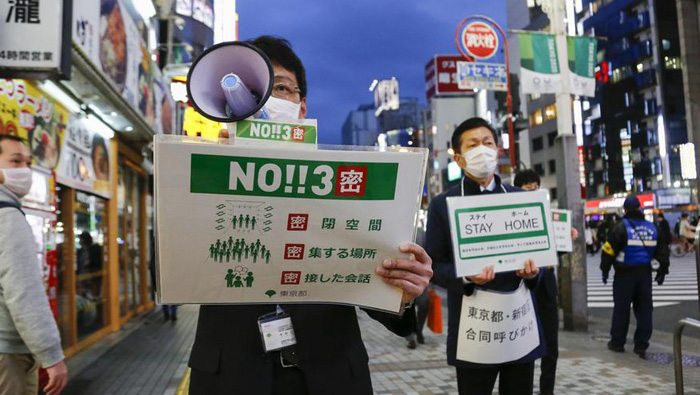
Tokyo: Higher "mindo" is Japanese's Finance Minister Taro Aso's explanation for why Japan has witnessed relatively few deaths from COVID-19. This term describes "cultural standards" and is often used in reference to nationalism and ethnic superiority. The TV station TBS, in its turn, said that because Japanese had fewer plosives (in phonetics, a stop, also known as a plosive or oral occlusive, is a consonant in which the vocal tract is blocked so that all airflow ceases) than many other languages, fewer virus-laden droplets were transmitted by air when people spoke. Many Japanese have also attributed the low number of cases to Japan's culture of eating traditional and healthy food.
However, such theories do not explain why the number of COVID-19 cases and deaths has been relatively low not only in Japan but also in much of the rest of Asia. China has reported three deaths per million inhabitants, South Korea and Indonesia five, Pakistan six and Japan seven. Vietnam, Cambodia and Mongolia have reported not any confirmed COVID-19 deaths. Germany, on the other hand, has had 100 deaths per million inhabitants, the US almost 300 and Britain, Italy and Spain more than 500.
Differences in how numbers are counted and in the amount of testing do not explain these large divergences. In South Korea, there was mass testing of the population on parking lots, while in Japan, only people who had had a fever for four days and the people they were in contact with were tested.
The fact that people do not shake hands or kiss to greet each other in much of Asia cannot really explain them, either, considering that COVID-19 seems to be transmitted mainly by air and not contact. So researchers are looking at other reasons that could explain the wide differences in the number of cases and deaths between East Asia and much of the rest of the world.
Did mutation make COVID-19 more contagious?
Scientists at Japan's National Institute of Infectious Diseases have discovered that the genetic makeup of SARS-CoV-2 changed as it spread from region to region. They found that the first cases in Japan and on the cruise ship Diamond Princess that was docked in the port of Yokohama clearly originated in Wuhan, but that the second outbreak in April could be traced back to people who had entered Japan from Europe. These findings were corroborated by research being conducted at Cambridge University in Britain. A team of researchers at Los Alamos National Laboratory in the US postulated that the virus might have become more contagious in Europe and America through a mutation.
Tatsuhiko Kodama, a member of the Research Center for Advanced Science and Technology (RCAST) at the University of Tokyo, has based some of his research on findings from La Jolla Institute for Immunology in California. According to these, many people in East Asia seem to have antibodies that protect them from the novel coronavirus. Kodama attributed this to the many previous flu viruses and coronaviruses that originated in southern China and caused people in the region to catch colds and related illnesses.
"They have white blood cells that can fight off related viruses such as SARS-CoV-2," Kodama says, adding that this does not make them fully immune but enables their bodies to cope with a certain amount of a similar type of virus. The Nobel laureate and immunologist Tasuku Honjo also argues that there is a great difference between Asians and others when it comes to the genes that control the immune system's response to viruses.
Kodama, however, warns that people in East Asia were not necessarily completely safe from all viruses. He says if a virus mutated, it could be just as dangerous for people there as in Europe.
Mandatory TB vaccinations
Another theory that is popular in Japan is that people are better protected than elsewhere because there is a policy of mandatory vaccination against tuberculosis, making their immune systems stronger against viruses in general.
However, in France, where the rate of vaccination is just as high as in Japan, the COVID-19 mortality rates have been much higher, so this argument does not hold.
With higher "cultural standards," Aso probably meant not only the fact that in Japan people are more willing to wear protective masks but also that there is a generally higher level of health among the population. According to the World Health Organization, only 4 per cent of Japanese citizens and 5 per cent of South Koreans are obese. In Western Europe, this figure jumps to 20 per cent and in the US it is over 36 per cent.
However, there is currently no evidence of any direct link between obesity and COVID-19 deaths.